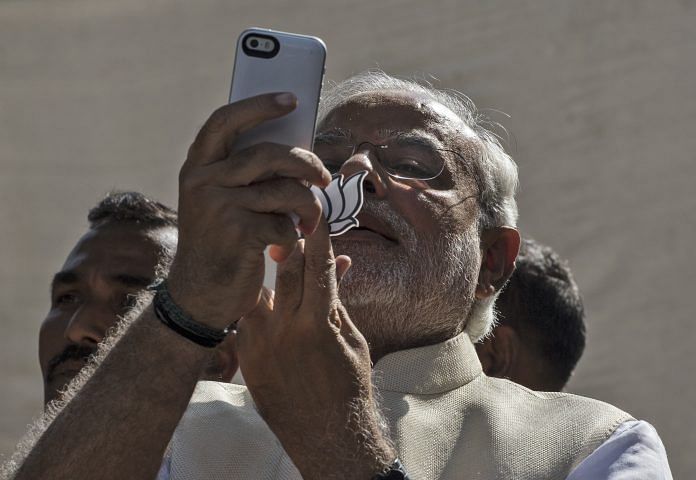At any given time, on an average, six states and about 160 million people in India are perpetually on election mode every year.
In 2014, assembly elections were held in nine states where 223 million voters were involved. In the same year, general elections were held at the national level to constitute the 16th Lok Sabha where the Election Commission of India deployed 1.4 million electronic voting machines in about 9,30,000 polling stations manned by 10 million polling officials and involving 814 million registered voters.
A year before that, the Election Commission had already held elections in another nine state assemblies with a combined electoral strength of more than 165 million voters.
The magnitude of this election process can only be compared to the US presidential election in 2016 involving 230 million voters making the Indian election process four and a half times bigger. Countries such as Brazil, Indonesia, Mexico, Germany and the US are large in size but no match in numbers when it comes to the size of Indian election machinery.
In short, at any given time, on an average, six states and about 160 million people in India are perpetually on election mode every year. If population projection estimates are taken seriously, 20 per cent more voters would have been added by the end of 17th Lok Sabha (2025), presuming the election is held as per current schedule.
People are only one aspect of this colossus of an operation called elections. Consider the cost factor, the movement of officials and security personnel.
The cost of conducting the 2014 Lok Sabha election was estimated to be around Rs 3,426 crores. Subsequently, elections were held in Maharashtra, Bihar and Gujarat at the cost of about Rs 800 crores. The average expenses of state elections are roughly estimated to be about 8 to 10 per cent of the general elections held once in five years. Any midterm election to Lok Sabha involves similar cost.
Needless to say, all this comes from the taxpayers’ hard-earned money and most of it is meant for developmental activities. (How much, or little, of the money spent on elections would have gone for development otherwise is another sad story).
According to research by Gopal Dhok in Forum For Integrated National Security, deployment of armed forces and security personnel for election purpose is another gigantic task involving huge cost and efforts. 1,349 mobile companies of the Central Armed Police Force (CAPF) were deployed for the 2014 Lok Sabha election.
For instance:
-More than 560 companies of CAPFs (560,000 personnel) were deployed for 16.7 million electors in 21,418 polling stations during the Chhattisgarh assembly elections in 2013.
-During the 2015 Bihar assembly election, more than 750 companies of CAPF were deployed.
-Gujarat deployed 389 companies of CAPF for the 2017 assembly elections including 90 Border Security Force (BSF) companies, 35 from Indo-Tibetan Border Police (ITBP) and 34 from the Sashastra Seema Bal (SSB).
-Nagaland deployed 281 companies of CAPF in the recently held Assembly elections.
With the state elections spread across five years in an election cycle, the CAPF, which includes the BSF, the ITBP, the CISF and the SSB are committed to election duties for a prolonged period every year away from their primary designated duties in border areas, sensitive locations and other critical security functions. Such a wide use of security personnel for elections every year, albeit in some states, not only involves large costs and mobility issues but also means absence in their designated area that makes us vulnerable to infiltration and other security threats.
The absence of effective Constitutional provisions for simultaneous election is one argument that is held against the idea. The strength of the Indian Constitution lies in its flexibility and freedom to accommodate amendments to suit the changing times and emerging challenges.
While election is the lifeline of a democracy, the acrimony and socio-economic-political disruptions it brings should be a cause of worry. Vote-bank politics, making tall promises, and resorting to corrupt and illegitimate means to grab power have reduced elections to mere strategic victories rather than building blocks of a democracy.
One important pre-requisite for simultaneous election would be to consider amending the Constitution so as to have fixed tenure for Lok Sabha and all state assemblies. This would eliminate the need for out-of-turn elections and political uncertainty. The question of a hung house and the government losing majority can be addressed after extensive debates in public and by experts.
Opinions on having simultaneous elections in India are greatly divided among political parties and eminent persons alike. The focus of the debate seems to be more subjective than objective, driven mainly by narrow political considerations. Simultaneous elections may not be a one-time solution for all our socio-political ills of commission and omission. But it certainly is not so repugnant an idea for a robust democracy that it needs to be dismissed only because it comes from the Prime Minister or a party with which one might have differences.
The author is former editor of ‘Organiser’ and Secretary General of Forum for Integrated National Security FINS.



